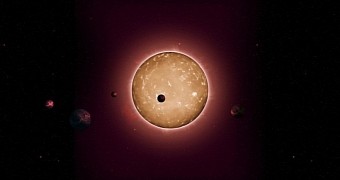A paper published in today's issue of the Astrophysical Journal announces the discovery of as many as five previously undocumented planets that are orbiting a star dubbed Kepler-444.
Apart from the fact that they are similar to celestial bodies in our Solar System in that their sizes vary between those of Mercury and Venus, what makes these planets quite special is their age.
Thus, astronomers show that the star orbited by these newly found planets is about 11.2 billion years old. Just to put things into perspective, it must be said that our Sun has only been around for about 4.5 billion years now.
What this means is that the planets circling Kepler-444 are too freakishly old. Seeing how these cosmic objects resemble the ones comprising our Solar System, this could mean that life was possible in the young universe.
As astronomer Tiago Campante put it, “We now know that Earth-sized planets have formed throughout most of the Universe's 13.8-billion-year history, which could provide scope for the existence of ancient life in the Galaxy.”
Still, it's important to note that, according to evidence at hand, the newly discovered planets are uninhabitable. This is because the distance between them and their host star is less than one-tenth the one between Earth and the Sun.
Hence, the planets take just 10 days to circle their parent star and are forever exposed to high levels of radiation. What's more, their closeness to their star means that it's highly unlikely that they can store liquid water.

 14 DAY TRIAL //
14 DAY TRIAL //